Spain’s nature features soaring mountains, subtropical forests, pristine beaches, and glorious national parks brimming with wildlife—including Iberian wolves, brown bears, and birds of prey.
Stretching from the Bay of Biscay in the north to the Mediterranean coast and the volcanic Canary Islands, Spain has one of the most diverse and thrilling landscapes in Europe.
From sipping on wine at leafy vineyards to hiking dramatic mountains and wind-tousled coastal paths, read on to discover some of the best ways to immerse yourself in Spain’s nature.
Take a Boat to the Cies Islands
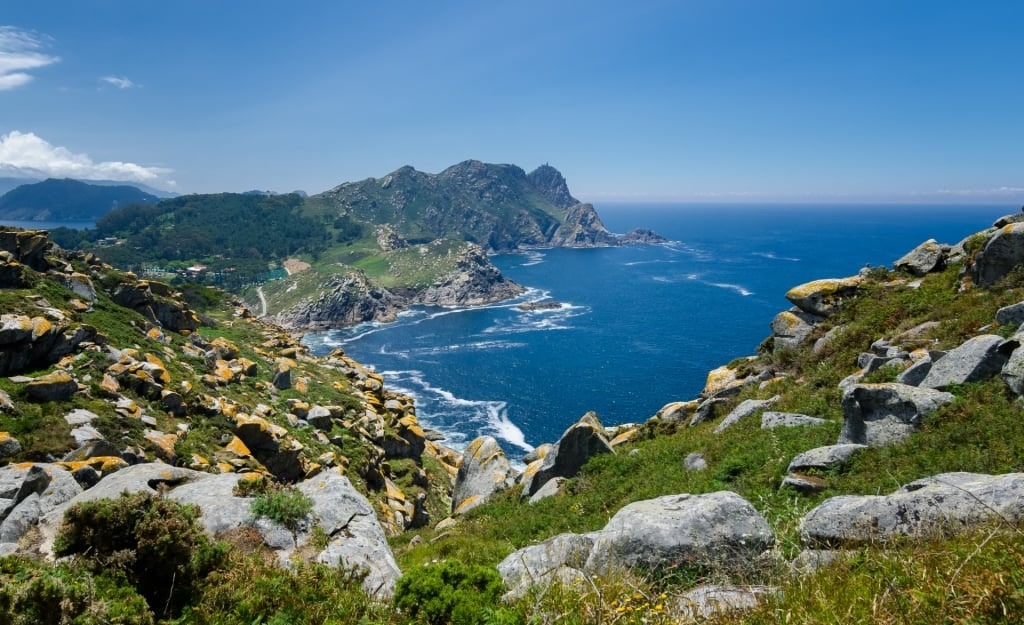
Cies Islands
The Cies Islands are found off the coast of northwest Spain, reached by a short boat ride from Vigo.
An archipelago of three islands (Monte Agudo, O Faro, and San Martiño), the Cies Islands are known for their pristine white sand beaches and unspoilt feel. There are no cars on the islands and the only accommodation is a single campsite.
Local authorities also limit the number of daily visitors allowed onto the islands so it’s advisable to pre-book the 45-minute boat journey from Vigo harbor ahead of your trip.
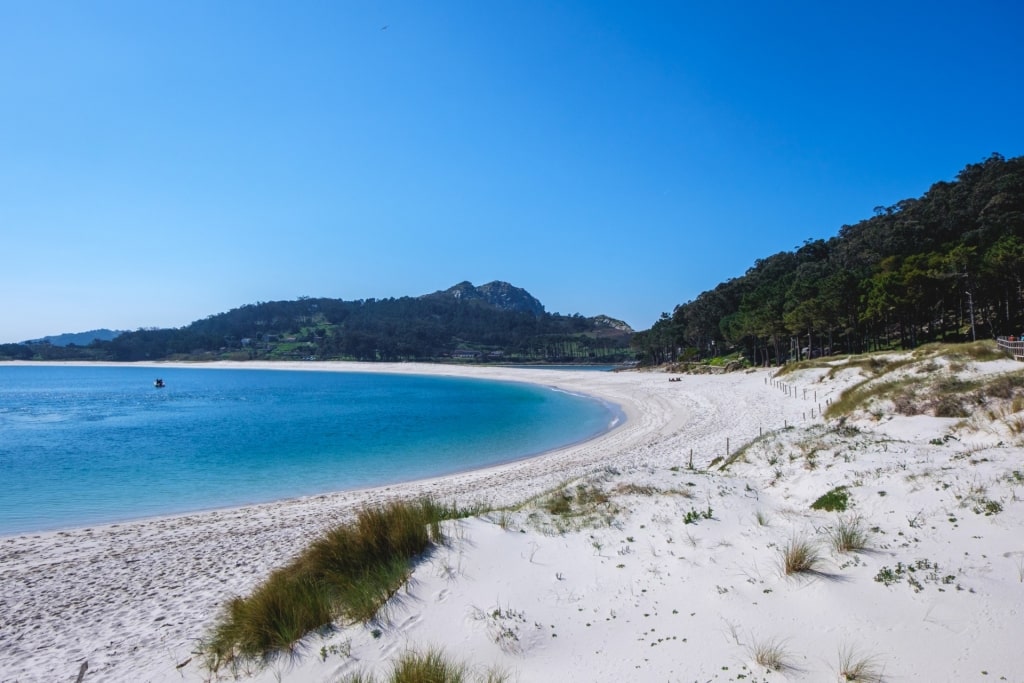
Playa de Roda, Cies Islands
The islands’ main beach, the salt-white Playa de Roda, is a thin strip that connects Monte Agudo and O Faro. Be prepared for the beach’s gorgeous crystalline water to lure you in.
Following a bracing swim or energizing hike across the Spanish islands, reward yourself with a local lunch at Rhodes Restaurant, located within a former salt factory.
Tour the Caves of Drach, Mallorca
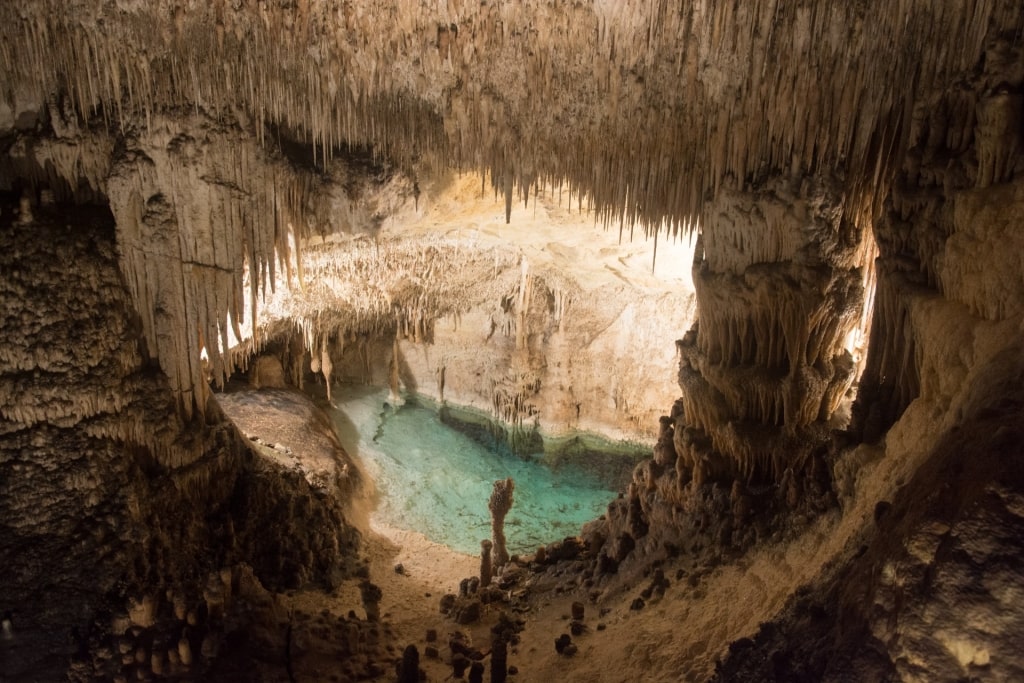
Caves of Drach, Mallorca
The Caves of Drach on the southeastern coast of Mallorca consists of four two-and-a-half mile-long interconnecting caves—Black Cave, White Cave, Cave of Luis Salvador, and Cave of the French.
The caves hide shimmering underground pools, including Lake Martel, considered one of the biggest underground lakes on the planet. The lake is around 40 feet deep, named after the French explorer and scientist Édouard-Alfred Martel, who discovered the lake and two of the caves in 1896.
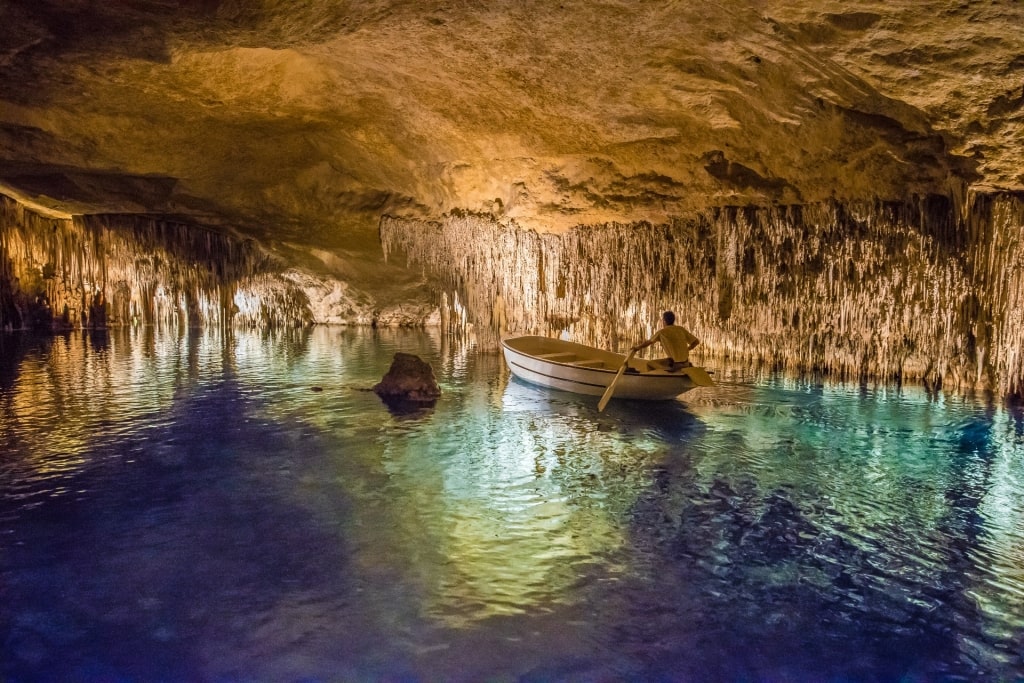
Caves of Drach, Mallorca
One of the best things to do in Mallorca is to explore the Caves of Drach by taking a boat ride into the cavernous space, complemented by a moving classical music concert that takes place on Lake Martel.
You’ll be met with hauntingly beautiful scenes inside the caves, with thousands of stalactites hanging from the ceilings, bathed in artificial golden light.
Read: Best Caves in the World
Sip Wines in La Rioja

La Rioja wine
Whether or not you’re a fan of Spain’s nature, wine, or both, a jaunt to La Rioja, near Bilbao, offers a rewarding day out.
Rioja is Spain’s oldest wine region and is an oenophile’s dream, with over 500 wineries. The area is best known for its rich red wines, but white, rosé, and sparkling varieties are produced here, too.
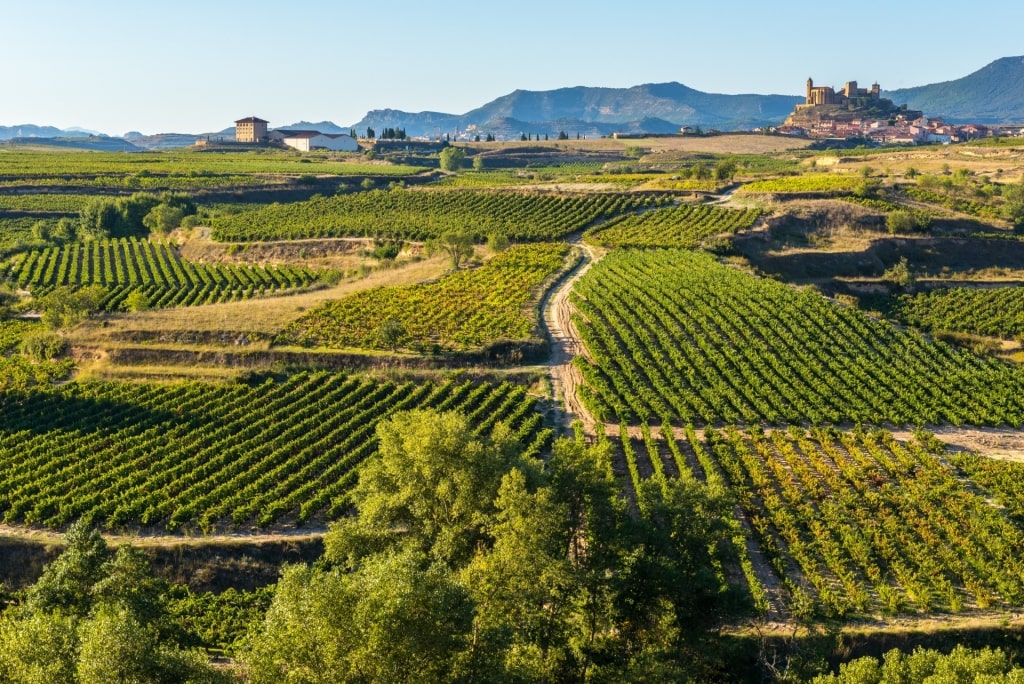
Vineyard in La Rioja
Sipping wines and touring vineyards are the most popular activities in Rioja, and it’s also one of the best places for cycling in Spain. To delve further into Spain’s nature, you could go horseback riding, off-road driving, or join an exhilarating hot air balloon ride.
If vineyard hopping is a top priority, try the delicious wines at Marques de Murrieta, a bodega established in 1852 and adorned with attractive gardens on the edge of the ancient city of Logroño.
Travelers can also explore Logroño’s beautiful streets, with its Baroque Cathedral of Santa María de la Redonda, the Museo de La Rioja, and leafy Ebro Park.
Trek in Montserrat
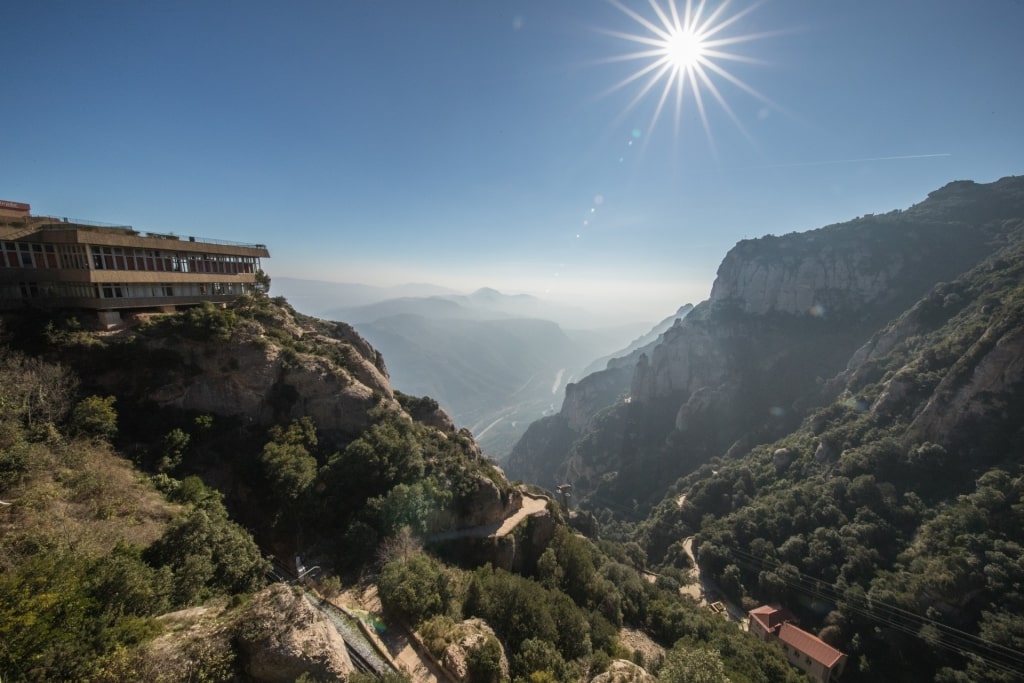
Montserrat
Montserrat is one of the best day trips from Barcelona to experience Spain’s nature. The dramatic mountain range features three main peaks—Sant Jeroni, Montgrós, and Miranda de les Agulles—though it’s the head-turning Santa Maria de Montserrat that lures travelers.
Here, an 11th-century Benedictine abbey continues to be occupied by a group of monks. Santa Maria de Montserrat is central to an enclave of squares and a basilica.
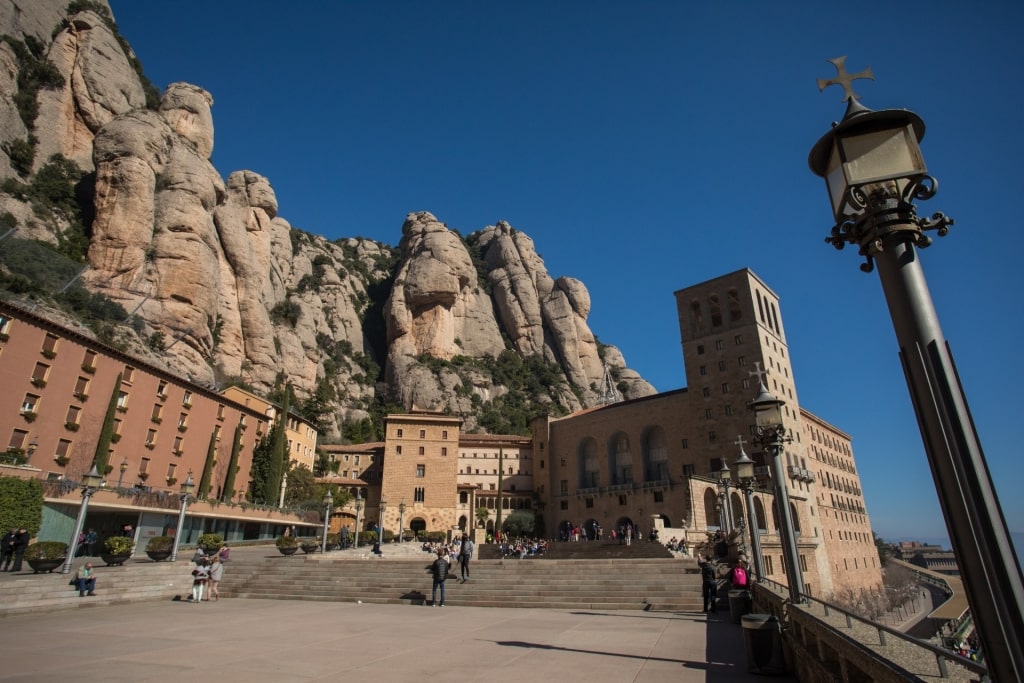
Santa Maria de Montserrat
Make your way to the monastery for breathtaking views of this spectacular Spanish nature reserve. Travelers get a bird’s eye view of the surrounding pine and holm-oak woods, laced with hiking trails and abundant with wildlife, including wild boars and squirrels.
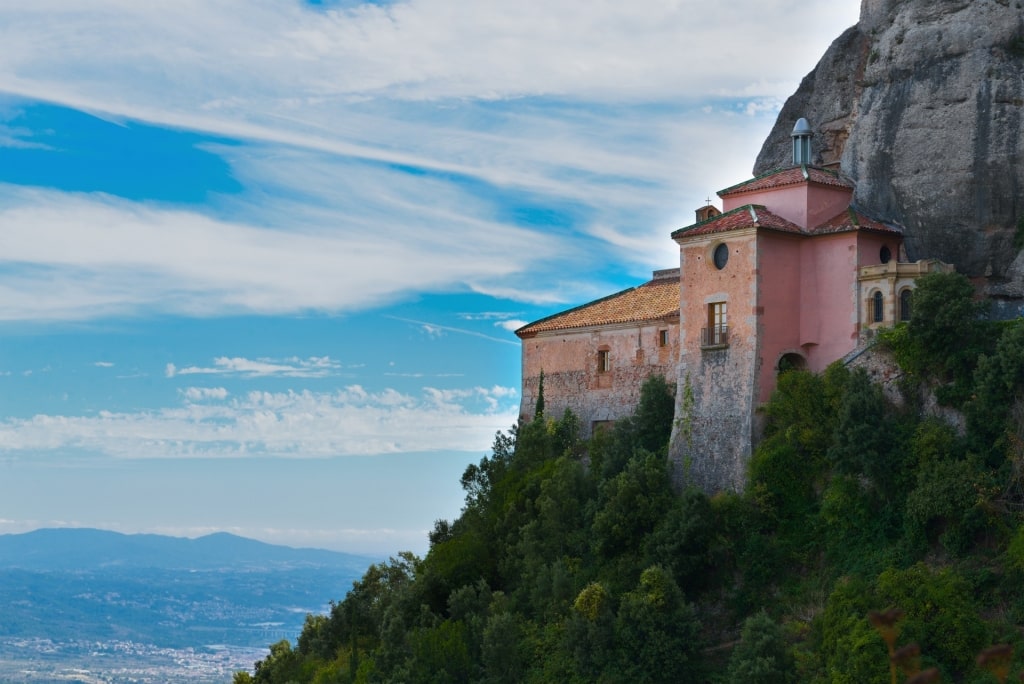
Santa Cova Chapel, Montserrat
Pick up an audio guide to hear about the Santa Cova chapel, carved into Montserrat’s jagged gray rock, where an image of the Virgin Mary is said to have been seen. Inside the beautiful monastery, there’s a neo-Romanesque cloister and masterpieces by artists Picasso, Dalí, and El Greco.
Read: Three-Day Barcelona Itinerary
Relax on Cala Conta Beach, Ibiza
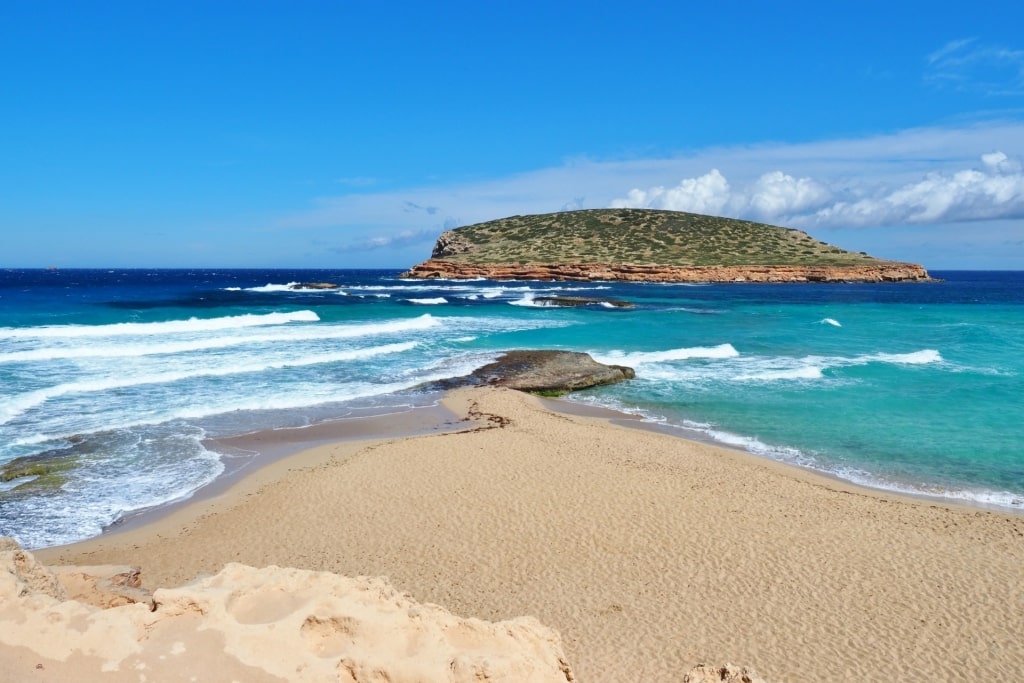
Cala Conta Beach, Ibiza
A gleaming stretch of turquoise water and powdery sand, Ibiza’s Cala Conta is one of the most beautiful beaches in Spain.
Cala Conta Beach is divided into three sections, with dunes around one and rock formations backing another. A stretch of the beach is clothing-optional, too.
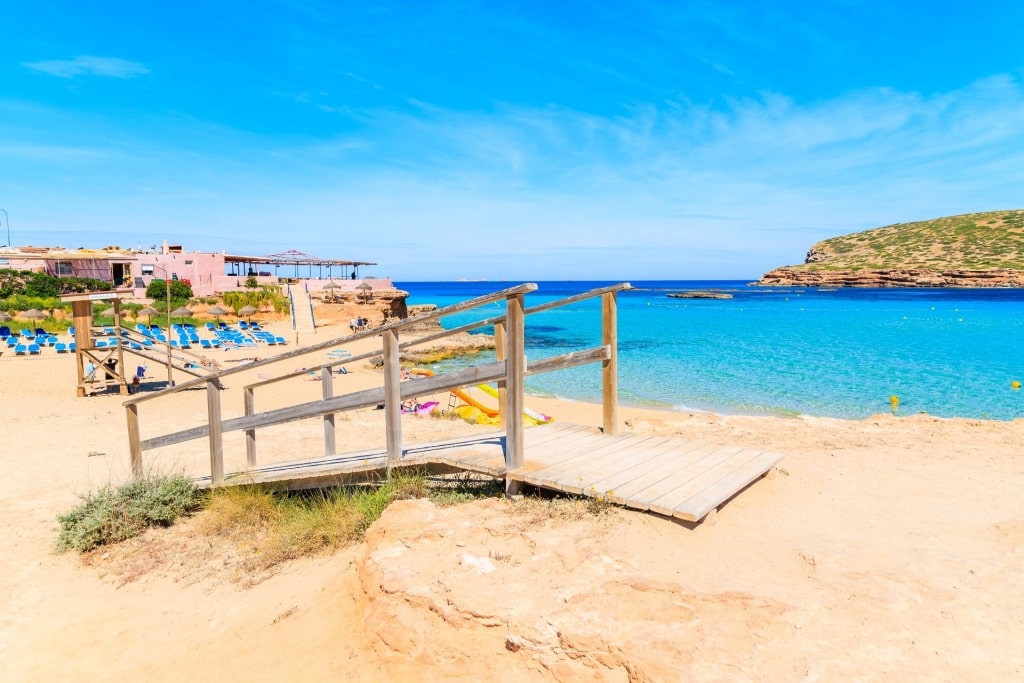
Cala Conta Beach, Ibiza
Cala Conta faces some of Ibiza’s smaller islands, which can be reached via a relatively short swim.
A selection of beachfront restaurants serves delicious seafood by the beach. Sunset Ashram is a popular spot to experience some of Ibiza’s famous bohemian ambiance, with live DJ sets and sultry cocktails.
Read: Best Beaches in Ibiza
Wander in Park Güell, Barcelona

Park Güell, Barcelona
Travelers don’t need to look far—or even leave the city—to find nature in Spain. Park Güell, with hundreds of trees, is right in the center of Barcelona and has been a feature here since the turn of the 20th century.
Spain is known for its impressive architecture, and Park Güell’s mosaic-covered buildings, expressive sculptures, and luscious landscaping offer plenty to see and do to fill an entire day.

Casa del Guarda in Park Güell, Barcelona
Pass through the Gaudí-designed gatehouse, Casa del Guarda, and explore the fascinating Gaudí House Museum, which was the architect’s home from 1906 until his death in 1926.

Pòrtic de la Bugadera in Park Güell, Barcelona
Seek shade in the Pòrtic de la Bugadera (The Porch of the Laundry), a sweeping, wave-shaped portico to the east of the park’s Greek theater, and wander among the 86 doric-style columns of the Hypostyle Room.
Hike to Parc del Carmel in the northeast corner of Park Güell, with the grassy hills leading to jaw-dropping views of Barcelona.
Read: Best Things to Do in Barcelona With Kids
Uncover Teide National Park, Tenerife
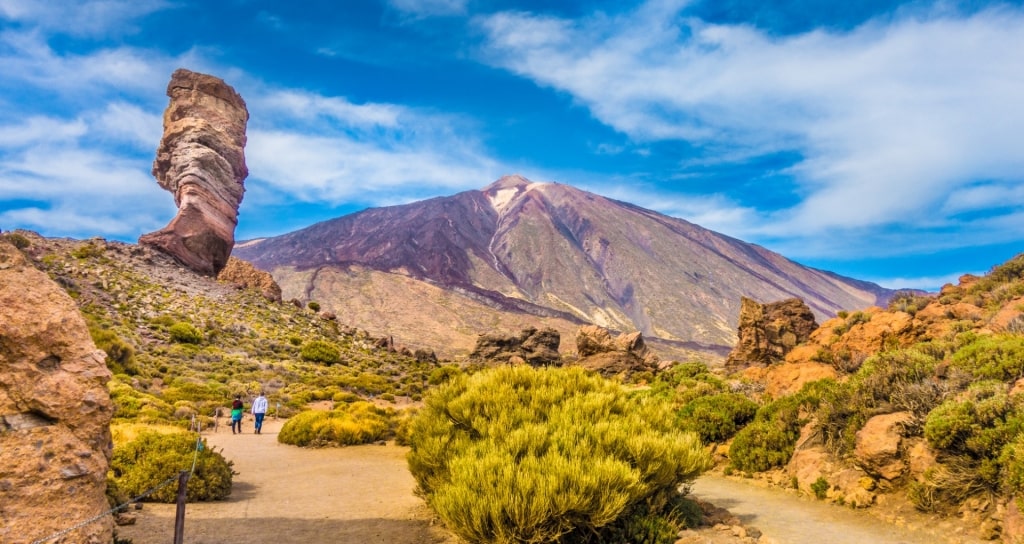
Teide National Park, Tenerife
One of the most extraordinary places in Spain for nature is Teide National Park on Tenerife, the largest of the Canary Islands.
The rugged ochre terrain of this UNESCO World Heritage Site stretches as far as the eye can see. Once you begin to scale the park’s centerpiece, the towering Mount Teide, the sapphire-blue Atlantic Ocean also comes into view.
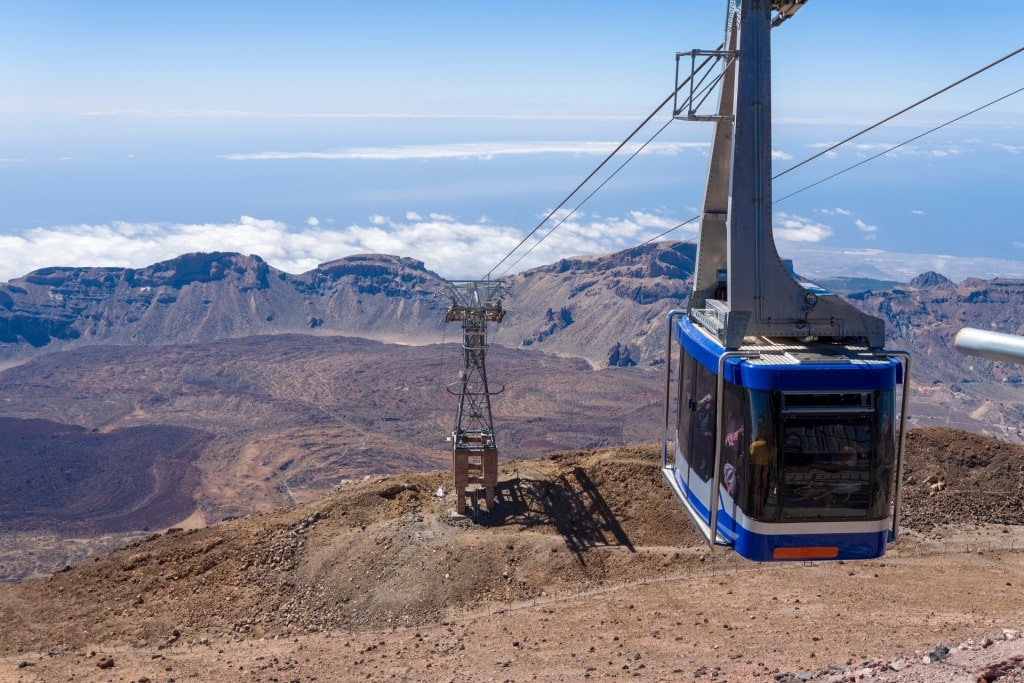
Teide National Park, Tenerife
Witness the awe-inspiring mountains, rock formations, deep craters, and lava fields surrounding Teide before taking a cable car almost 12,000 feet up the colossal volcano. On a clear day, gaze at the neighboring remote islands of La Gomera, El Hierro, and La Palma. And in winter, throw a snowball.
Exploring the hiking trails and observation points dotted around the park are some of the best things to do in Tenerife. There are also two visitor information centers, one in Portillo and the other in the Parador Nacional Hotel, and a restaurant.
Discover Timanfaya National Park, Lanzarote
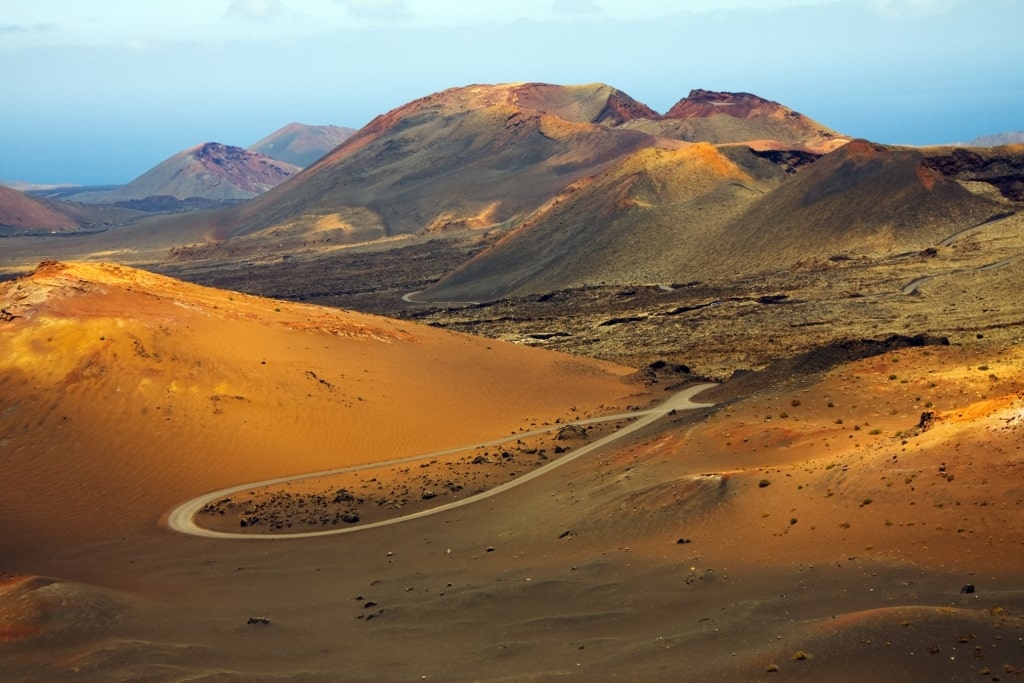
Timanfaya National Park, Lanzarote
On Lanzarote, the northernmost of the Canary Islands, Timanfaya National Park is as barren as it is beautiful.
Taking over a vast swathe of the western side of the island, Timanfaya rose from a series of ferocious volcanic eruptions that took place between 1730 and 1736 and again in 1824.
A visit to the red- and gold-tinged national park is one of the best things to do in Lanzarote, particularly if you’re keen to explore nature.
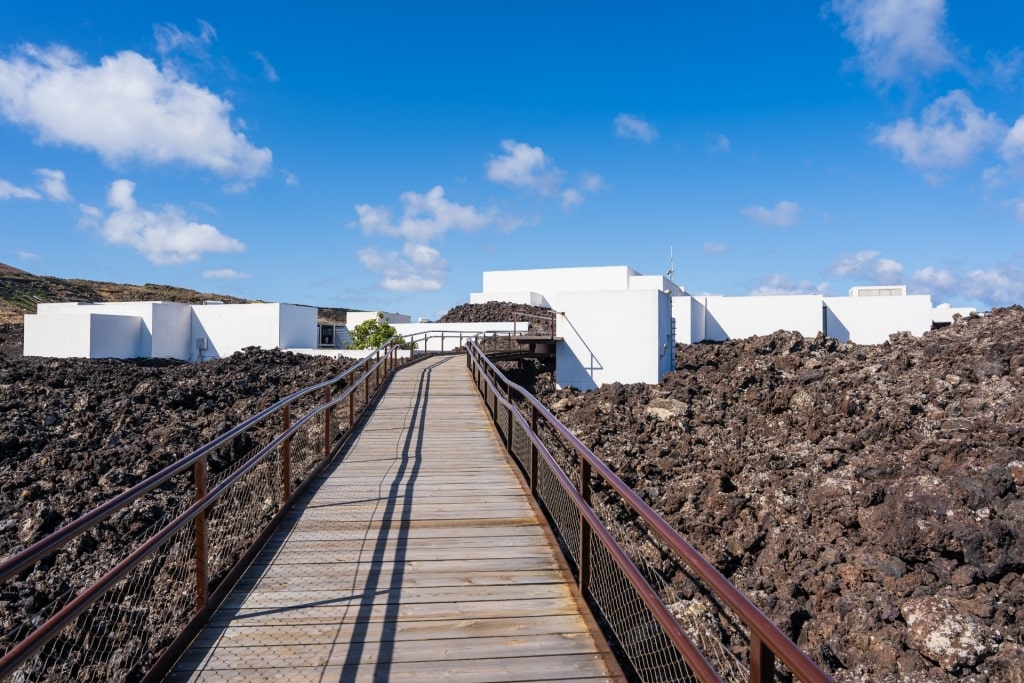
Mancha Blanca Visitor Center in Timanfaya National Park, Lanzarote
A sensible starting point is the Mancha Blanca visitor center, located in the middle of a lava field. The visitor center explores Timanfaya’s unique geology through a permanent exhibition and offers information on hiking routes.
Pick a suitable route to discover Montaña de Fuego (Fire Mountain), Caldera del Corazoncillo (Little Heart Cauldron), or Montaña Rajada (Cracked Mountain).
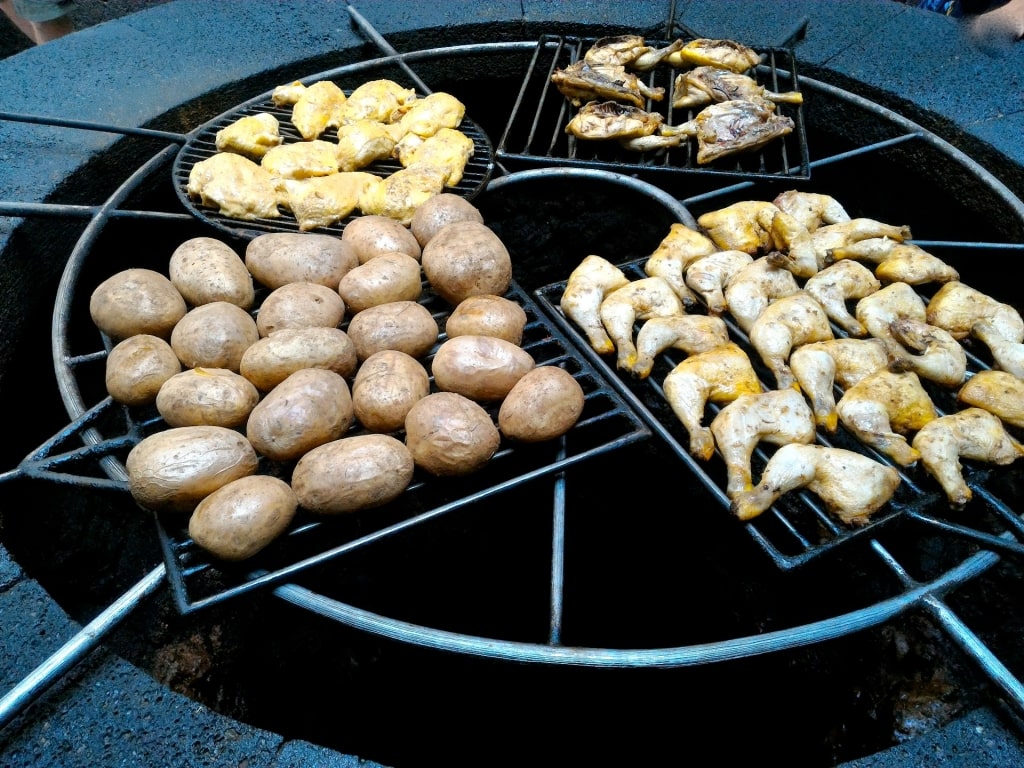
El Diablo in Timanfaya National Park, Lanzarote
In the center of the park, near Montaña de Fuego, enjoy a hearty lunch of Canarian-style boiled potatoes served with spicy mojo sauces and meat cooked using geothermal heat.
Venture to Montes de Málaga Natural Park

Montes de Málaga Natural Park
Montes De Málaga Natural Park on the eastern slopes of the Guadalmedina River basin in southern Spain is one of the best places to explore Spain’s nature.
Lying just a few miles north of Malaga, Montes De Málaga Natural Park offers trickling streams, pine-covered mountains, and many hiking opportunities.

Montes de Málaga Natural Park
Set off on a ramble through fragrant Aleppo, black, and stone pine trees. Stroll by thickets of holm and cork oaks, ash, elm, olive trees, plus yellow flowering gorse, honeysuckle, and wild herbs.
Wildlife in Malaga’s mountain range includes chameleons and birds of prey, including black kites, short-toed and booted eagles, and tawny owls.
Marvel at Alhambra Palace Gardens, Granada
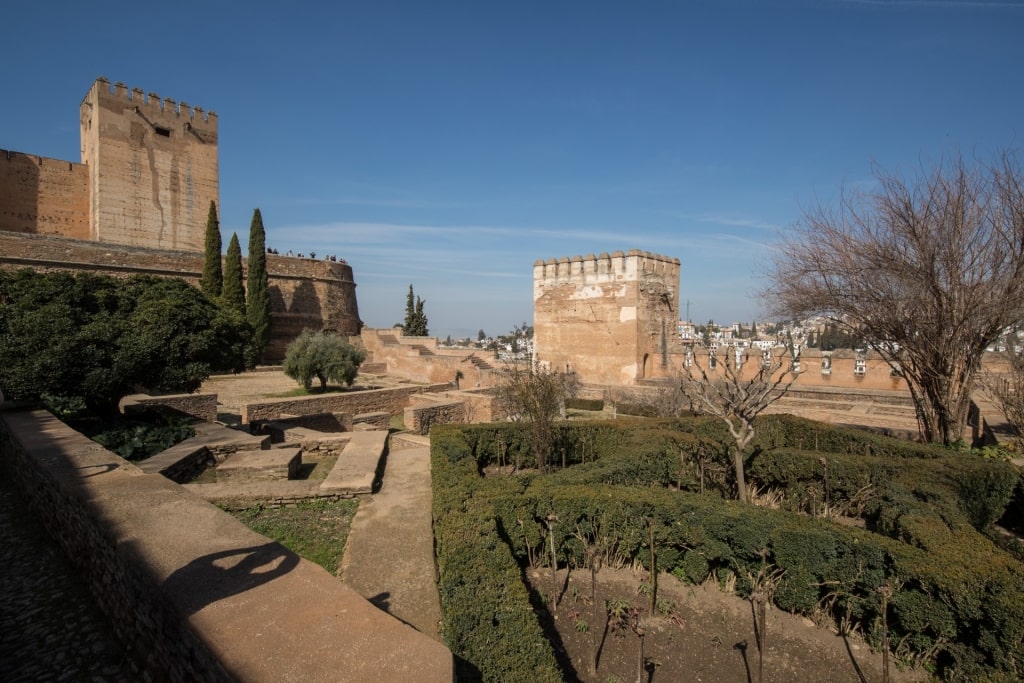
Alhambra Palace Gardens, Granada
Lying below the Sierra Nevada mountains, a 90-minute drive from Malaga, the lavish Alhambra Palace is a feast for all the senses.
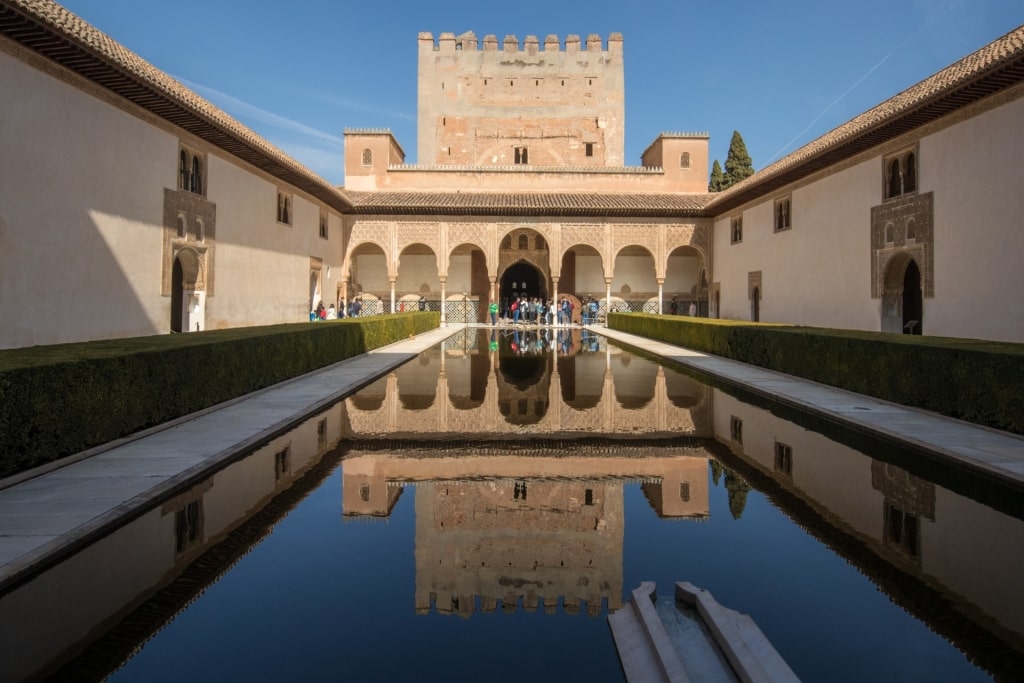
Alhambra Palace, Granada
This fanciful Moorish palace, fortress, and gardens—built by the rulers of the last Spanish Muslim Kingdom—is one of the most impressive examples of southern Spain’s Islamic architecture.
If your interest lies in the outdoors, head for the lush gardens of the Generalife and the Garden of the Ramparts, which mirror the splendor of the Royal Palace.
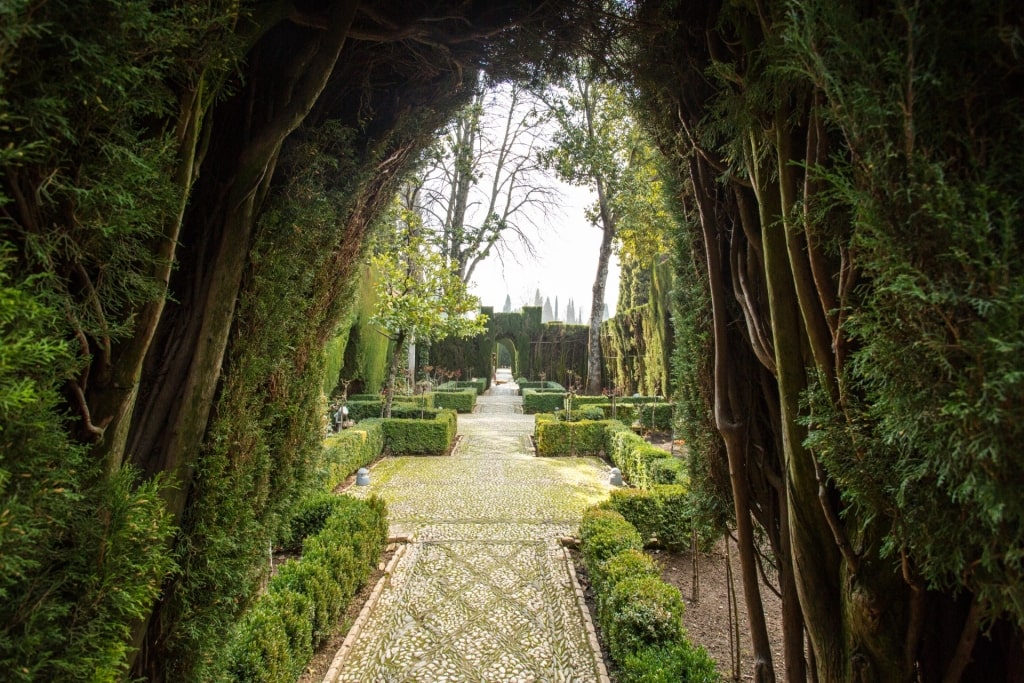
Alhambra Palace Gardens, Granada
Wander the delightful orchards, colorful walled gardens, and sun-dappled courtyards of one of Spain’s most romantic places.
Visit Maspalomas Natural Dune Reserve, Gran Canaria
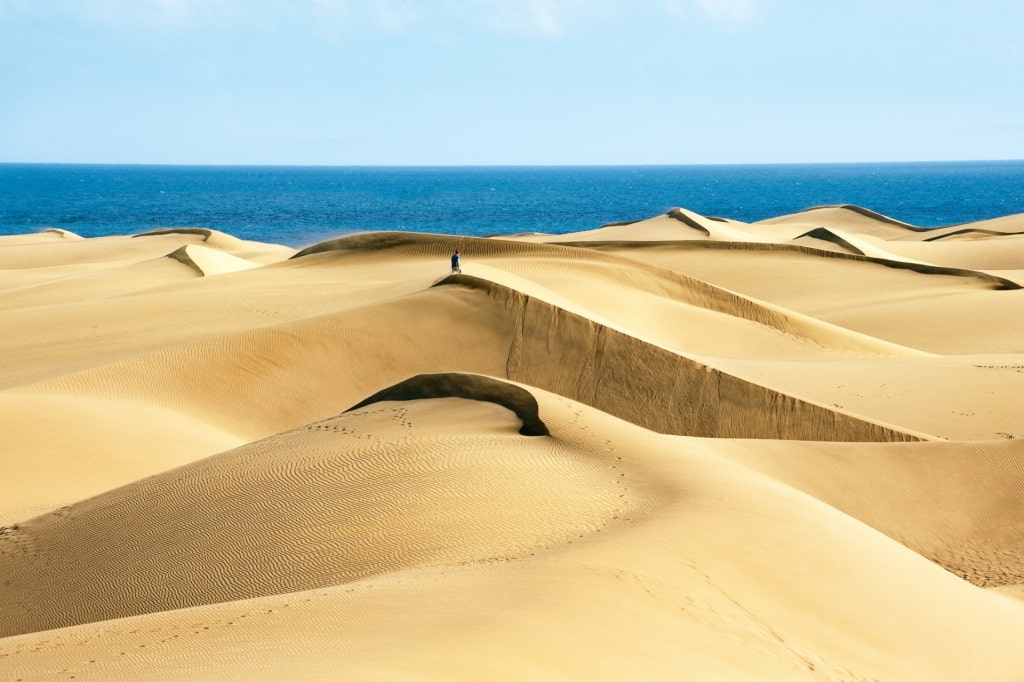
Maspalomas Natural Dune Reserve, Gran Canaria
Located on the southern tip of Gran Canaria, Maspalomas Natural Reserve is one of the most beautiful places in Spain. It is made of almost 1,000 acres of honey-hued dunes, a vast beach, palm grove, and brackish lagoon.
Wander through the dazzling dune system and you’ll feel like you’ve been whisked to the Sahara desert. Moments later, you could be enjoying a gentle paddle on the golden shore.
Relax in the shade of a palm tree as you look for swooping birdlife by the lagoon, including gray herons, sanderlings, and yellow-legged gulls, along with the occasional ospreys and Barbary falcons.
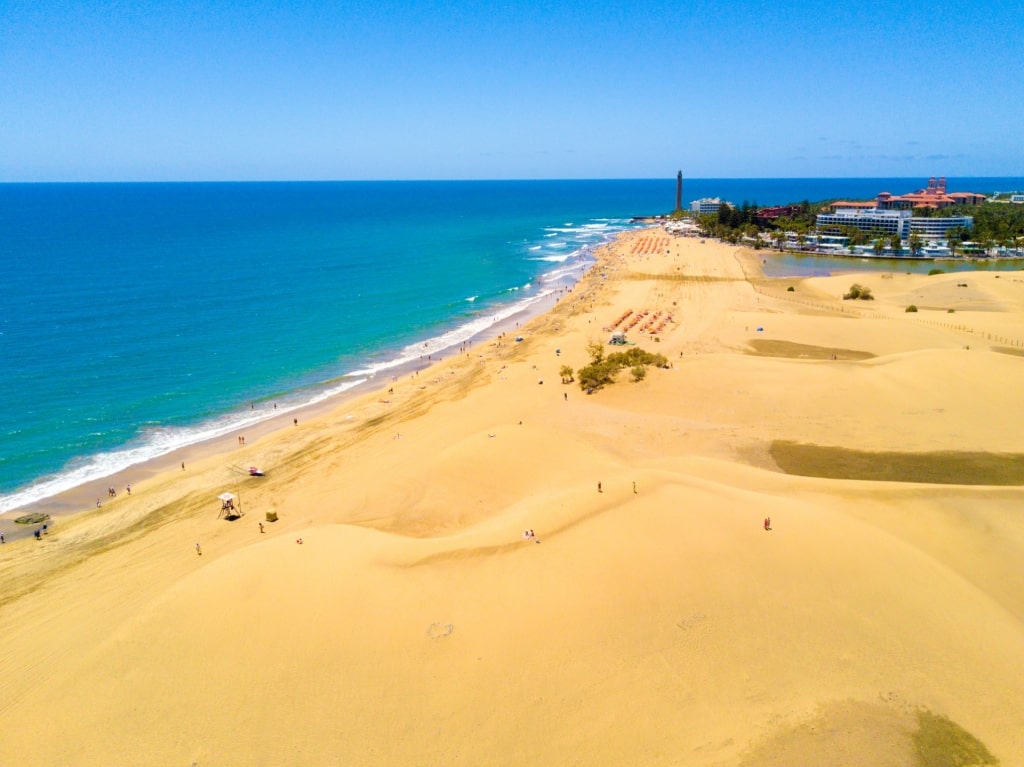
Maspalomas Natural Dune Reserve, Gran Canaria
To enjoy the warm ocean breeze, opt for a walk to Maspalomas Lighthouse at the beach’s western end. The 19th-century Spanish landmark has been in operation since 1890, initially guiding steamboats between Europe, Africa, and the Americas.
This buzzy area of the beach has plenty of places to eat and drink and a surf school offering watersports and surf lessons. Visiting here is one of the best things to do in the Canary Islands.
Read: Best Things to Do in Gran Canaria
Explore Mallorca’s Serra De Tramuntana Mountains
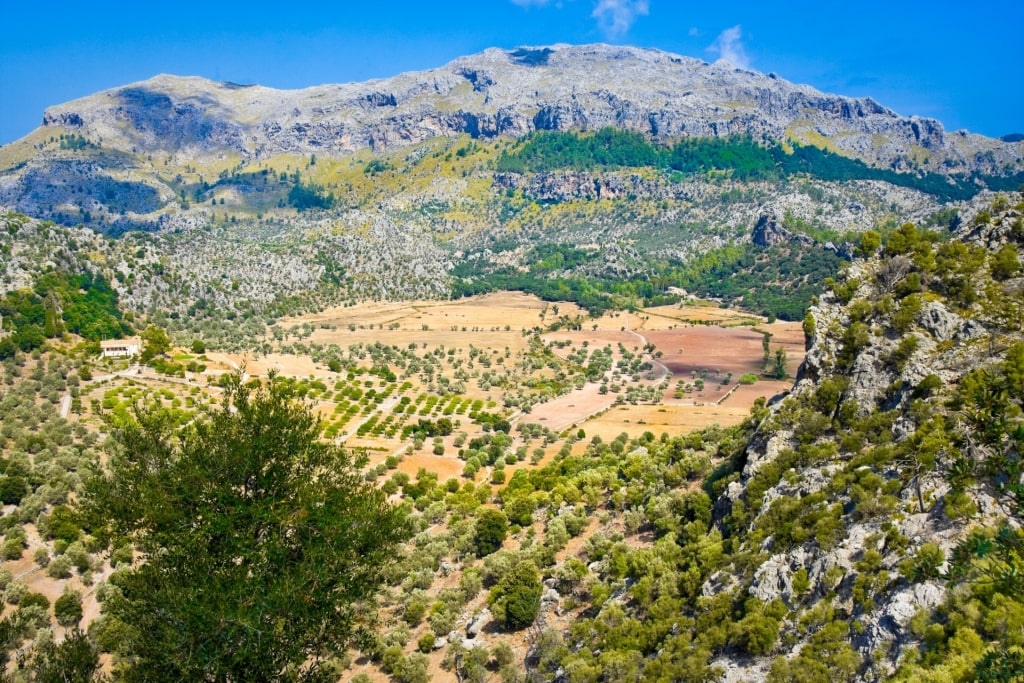
Serra De Tramuntana Mountains, Mallorca
Home to some of the best hikes in Spain, the Serra de Tramuntana is the green lung of Mallorca. The mountain range runs the entire length of the north coast, made up of fern, pine, holm-oak, and wild olive forests.
This UNESCO World Heritage Site is also peppered with pretty villages, coastal towns, and sandy coves to explore.
Drive or hike to one of the clifftop viewing points. One of the best spots is Mirador de Ricardo Roca, where you’ll find a restaurant perched on the edge of the cliff.
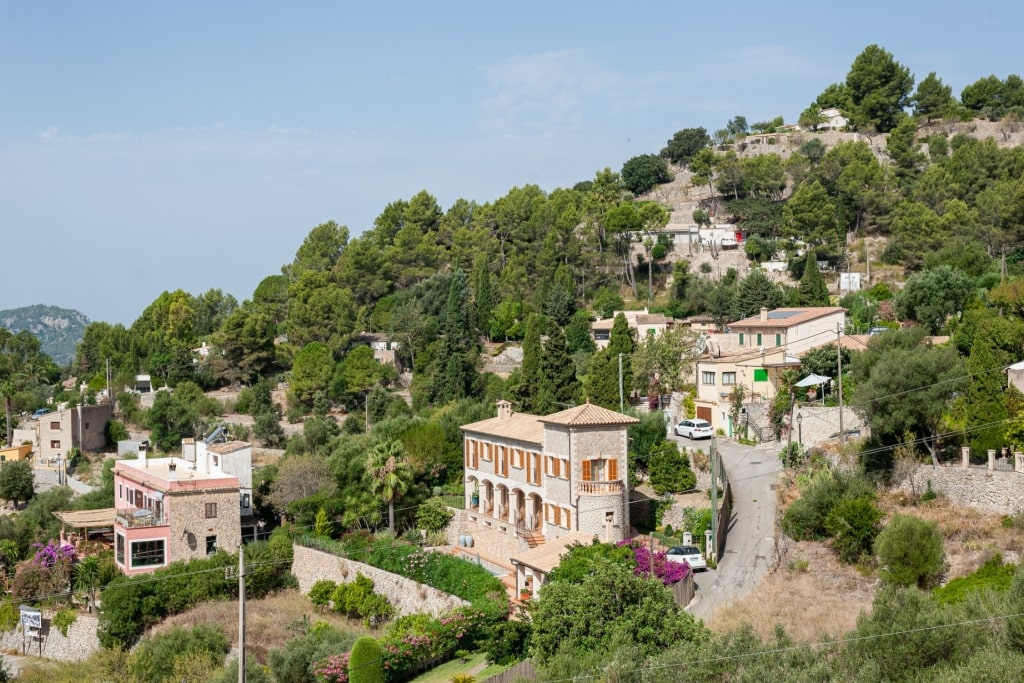
Galilea, Mallorca
You could also visit Mallorca’s highest village, Galilea, reached via a series of eye-watering switchbacks, 1,500 feet above sea level.
One of the most popular spots in the Serra de Tramuntana is Deià. A picture-postcard Mallorcan village nestled high up in the mountains, Deià has plenty of appeal, its winding streets lined with traditional stone houses with olive-green shutters.
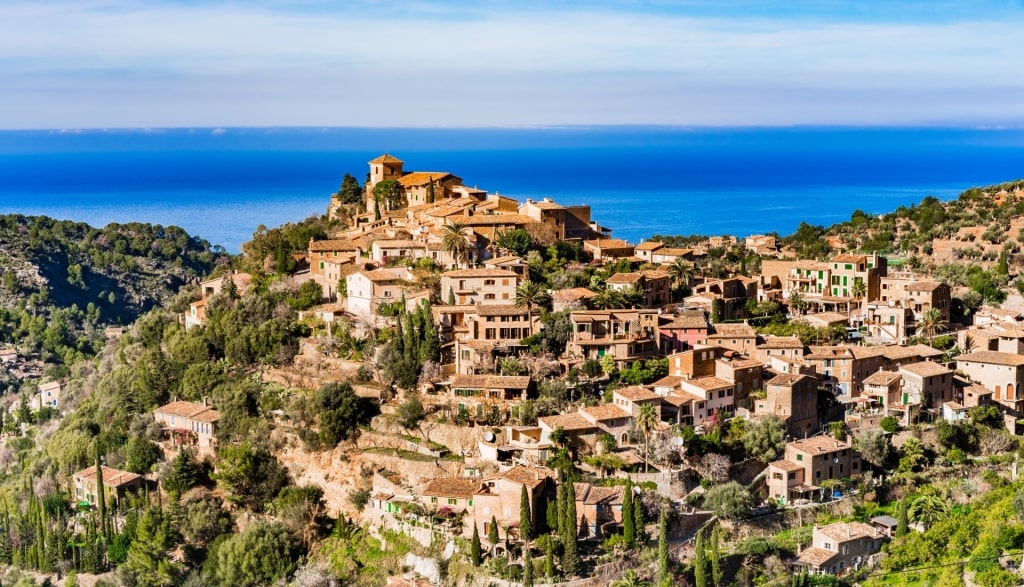
Deià, Mallorca
Deià became a hotspot among the rich and famous in the 20th century and continues to be a popular destination for its sweeping views, easy access to nearby coves, and top-quality restaurants with authentic Mallorcan food.
Read: Fall in Spain: 9 Incredible Experiences
Hike Picos de Europa National Park
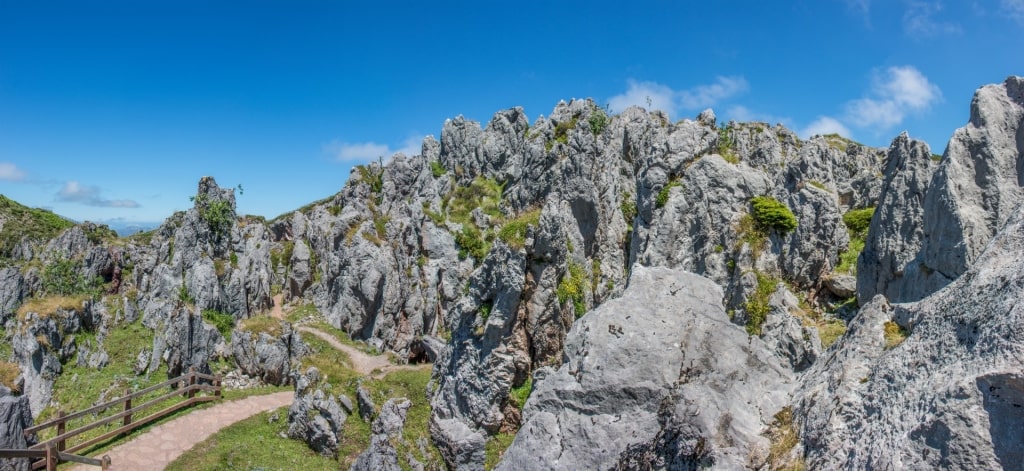
Picos de Europa National Park
The heart-stirring Picos de Europa National Park is drawn out across the provinces of Asturias, Cantabria, and León, just over a two-hour drive east of Bilbao in northern Spain.
The jagged mountain range is punctuated with emerald-green forests, glassy lakes, wildflower meadows, and razor-sharp peaks that are blanketed in snow during the colder months.
One of the biggest draws of this captivating national park is its wildlife, namely the brown bear and Iberian wolf, although both are very elusive. You’ll know they are there but the chances of spotting one are rare.
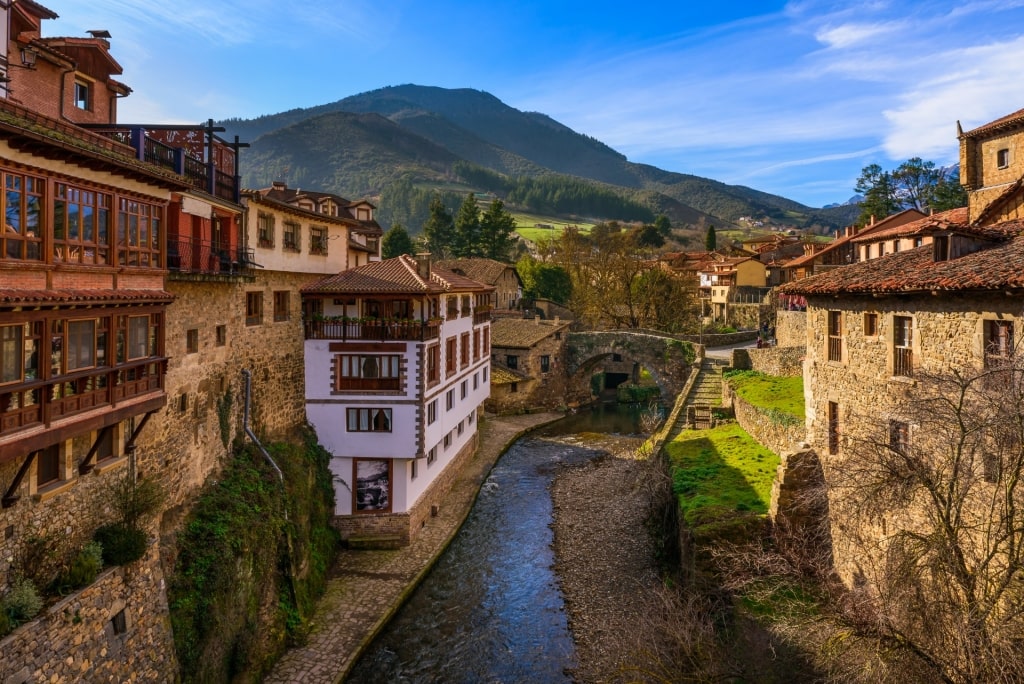
Potes
Before setting off on a hike, stop by the beguiling village of Potes in the Liébana region. This attractive hamlet ensconced in the mountains is home to a winding river and a medieval old quarter with a 15th-century tower and the Monastery of Santo Toribio de Liébana.
Thirty self-guided hiking routes are mapped out in the park, plus free guided tours, available from July to September. Opt for the latter to learn about the wildlife along the way.
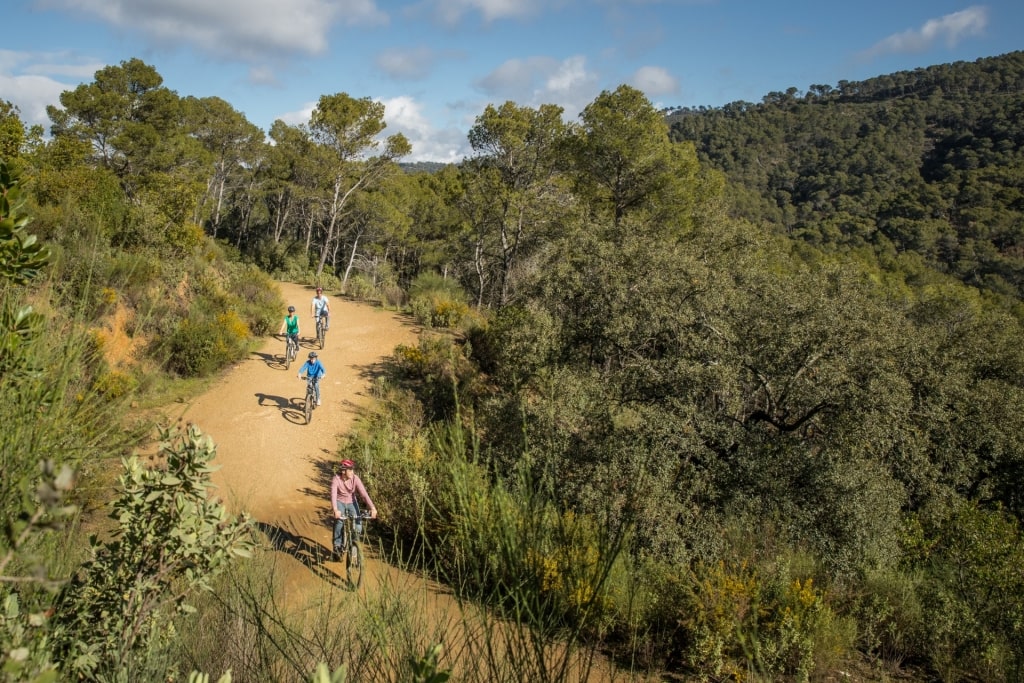
Montes de Málaga Natural Park
If you’re enthusiastic about nature, culture, and gastronomy, you’ll love Spain. Explore Celebrity’s cruises to Spain and find your next European getaway.


